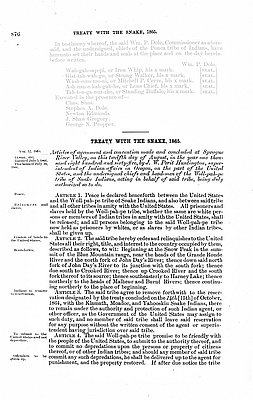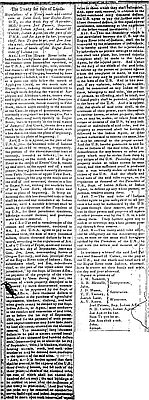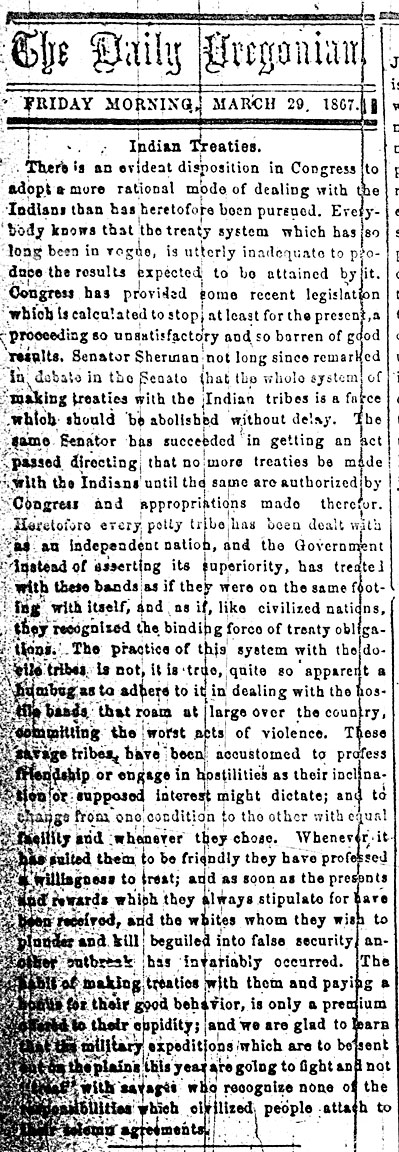- Catalog No. —
- Daily Oregonian, March 29, 1867
- Date —
- March 29, 1867
- Era —
- 1846-1880 (Treaties, Civil War, and Immigration)
- Themes —
- Environment and Natural Resources, Native Americans, Oregon Trail and Resettlement
- Credits —
- Oregon Historical Society
- Regions —
- None
- Author —
- Editors, The Daily Oregonian
News Editorial, Indian Treaties
The end of the treaty system in 1871 marked an important shift in the United States’ policy towards Indians. Since its founding the U.S. had negotiated with Indian tribes on a nation-to-nation basis. By the 1860s, however, many politicians, journalists, and others had come to consider the idea of Indian tribes as sovereign nations a farce. They argued that the United States should instead unilaterally “assert its superiority,”as the Daily Oregonian put it in this 1867 editorial, over Indian peoples, through the use of force if necessary.
This policy was put into effect four years later when Congress inserted into an obscure appropriations bill a clause that read “no Indian nation or tribe within the territory of the United States shall be acknowledged or recognized as an independent nation, tribe, or power with whom the United States may contract by treaty.”
The effort to abolish the system of nation-to-nation treaty making with Indian tribes was part of a larger movement during the nineteenth century to dismantle tribal organizations altogether. Many whites argued that the termination of nation-to-nation relations and the abolishment of tribalism would represent the first steps toward making Native peoples fully assimilated citizens of the United States, free from any tribal affiliation or vestiges of traditional culture.
This perspective remained influential well into the twentieth century. It was not until the self-determination initiatives of the 1960s and 1970s that the federal government would again seriously consider Indian tribes as sovereign nations.
Written by Kathy Tucker, © Oregon Historical Society, 2002.
Related Historical Records
-
Treaty with the Snake (Northern Paiute), 1865
This treaty, dated August 12, 1865, is reprinted from the second volume of Charles Kappler’s Indian Affairs: Laws & Treaties, published in 1904. J.W. Perit Huntington, Oregon Superintendent of …

-
News Article, The Treaty for Sale of Lands
The Table Rock Treaty was negotiated between the United States and several groups of Rogue River Indians in September 1853. Gold had been discovered just three years earlier, …

